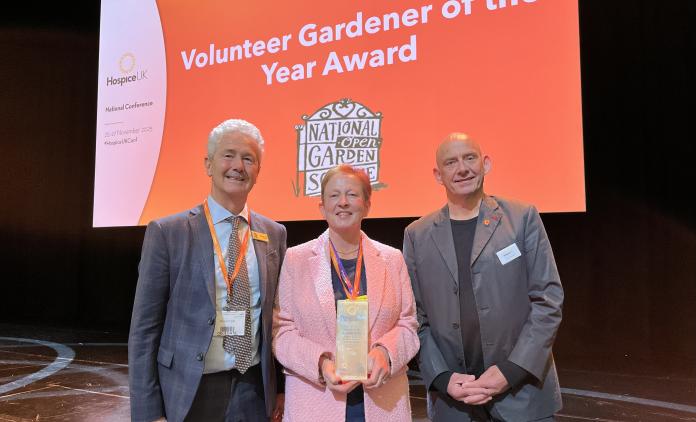
Fifty days of a new government: the challenge and opportunity for end of life care

As devastating news of further staffing cuts at hospices in the UK are announced, Sarah West, Hospice UK’s Director of External Affairs, comments on what needs to be done to address the current hospice funding crisis.
It’s little more than fifty days since the new Labour government was elected. In that time, they’ve been quick to emphasise the challenges the country faces.
Nowhere are those challenges greater than in the health service. The Health Secretary, Wes Streeting, has described the NHS as “broken.” His hope is that his candour creates space for reform.
Central to that reform, it has been made clear, is to shift care out from hospitals and into the community. In simple terms, that means more patients cared for either where they live, or in clinics and centres more local to them. Less time in hospital is what patients what, and what the system needs.
Hospices: part of the solution
Hospices are fantastically well supported and well loved community institutions that local people tend to know by name. They provide high quality care to 300,000 patients a year, and play a vital role in co-ordinating and joining up the work of different parts of the health and care system, which can be hard for families to navigate.
And so in the government’s agenda, hospices are part of the solution. Indeed, we know that hospices take the pressure off the NHS. Hospice care means less strain on GPs, fewer admissions to hospital, and more care delivered in the community.
Add in what we know about our ageing population, and projected death rates, and it’s clear that hospices should have a growing, critical role to play.

News of further cuts
But here’s the irony. At the very time hospices want to step up, they’re being forced to cut back. Today, we see the devastating news of significant cutbacks being made by St Giles Hospice in the West Midlands. They can no longer afford to run the very services that government is making clear are more important than ever.
The cuts – and very sadly, redundancies – made by St Giles follow similar announcements by Birmingham Hospice, and by Rowans Hospice in Portsmouth. In all, we estimate a fifth of hospices are now making cuts or have them planned this year.
This means fewer community inpatient beds and fewer home visits delivered by hospices. The NHS is left to pick up the slack. And as Mr Streeting has made clear, picking up slack is not something the NHS is in a strong position to do.
The reasons behind this drive to save costs are fairly simple. While hospices provide many services that are mandated in law and which the NHS would otherwise have to run, all too often they are not fairly paid for these services by local health boards (Integrated Care Boards or ICBs in England, health boards in Wales and Integrated Joint Boards in Scotland).
There is no standardisation of the funding hospices receive from these local commissioners. It’s based on history; not much more than accident. On average, a hospice gets around a third of its costs from the state – but this varies wildly. The remainder is raised by local communities through shops and charitable activities. It bears repeating: your fun runs and second hand jeans are what pays for your end of life care nurse.
Communities are paying the price
We all know in our personal lives how much costs have increased in the past two years. For hospices, this is no different. Energy costs went through the roof in 2022-23. And the cost of paying brilliant staff a fair wage – one that matches that of colleagues in the NHS – has, rightly, increased significantly.
But where NHS and other state services are provided with government funds to meet these costs, there is no such system for providers of health and care services which sit outside the NHS.
The result of this simple but brutal formula are inevitable. Hospices simply cannot sustain services that cost more and more to run. Cutting back is the last resort, but only once trustees and senior management are sure that no other efficiencies can be made, and that no further income can be raised from ever generous local communities.
It’s those communities who pay the price, ultimately. And our great fear is that – as is so often the case – it’s more deprived parts of the country where that price is dearest. Where communities’ ability to give charitably is more limited, the results will be more severe.
'No time for hospices to be cutting back services'
The new government has made building an NHS fit for the future one of its core missions. With 130,000 more people set to die every year by 2040 than do today, end of life care has to be central.
It’s no time for hospices to be cutting back services. It goes counter to everything that Labour is saying about a health and care service rooted in local communities, delivered as much as possible outside of big hospitals.
So while there are huge challenges facing the hospice sector fifty days after the election, there is also an opportunity. We need a short term support plan to stem the flow of cuts. The Welsh government has delivered this already. And we need a commitment to long term reform – also backed by governments in Wales and Scotland - that makes sure everyone gets the end of life care they need, when and where they need it.
These commitments will help Labour to achieve its goals. We only hope they see the opportunity, and act before it’s too late.

Written by Sarah West
Director of External Affairs, Hospice UK
Similar articles to this
The latest news and events from us here.




